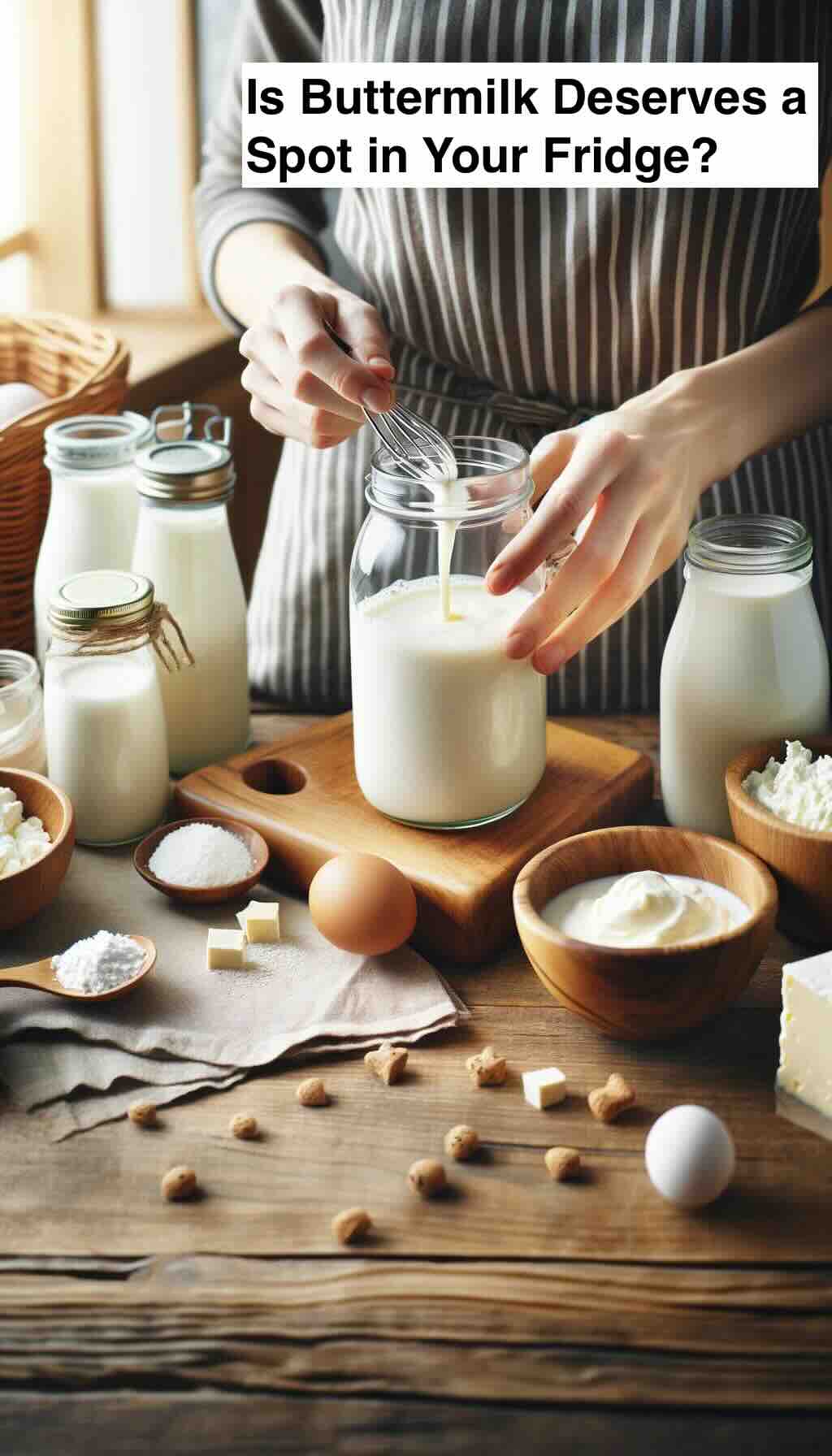
In a culinary world brimming with superfoods and diet trends, buttermilk stands out as a humble yet fascinating ingredient. Once a simple byproduct of butter-making, buttermilk has transcended its origins to become a staple in kitchens and cultures worldwide. Its journey from an accidental discovery to a cherished component of countless recipes is a testament to its versatility, nutritional benefits, and unique flavor. Let’s dive into the tangy depths of buttermilk, exploring its science, health benefits, and culinary prowess.
The Science of Sour Unpacking Buttermilk’s Creation
Buttermilk’s story begins in the pastoral landscapes of dairy farming, where the churning of cream yields butter and a leftover liquid—traditionally called buttermilk. However, the buttermilk we find on supermarket shelves today is often a cultured product, created by adding lactic acid bacteria to milk. This fermentation process thickens the milk, imbuing it with a tangy flavor and a creamy texture that enhances everything from baked goods to marinades.
Nutritional Nectar or Just Another Beverage?
Buttermilk’s reputation as a healthful ingredient is well-earned. Packed with calcium, vitamin B12, riboflavin, and phosphorus, it’s a nutritional powerhouse that supports bone health, energy production, and cellular function. Moreover, the probiotics introduced during the fermentation process contribute to a healthy gut microbiome, aiding digestion and potentially boosting immunity.
However, not all buttermilk is created equal. While traditional and cultured buttermilk boast health benefits, some commercial versions may contain additives or excess sodium. Savvy consumers should read labels carefully, opting for products with minimal ingredients to reap the full health rewards.
Culinary Chameleon: Buttermilk in the Kitchen
Buttermilk’s culinary applications are as diverse as they are delicious. Its acidic nature tenderizes proteins in marinades, adding moisture without the fat. In baking, buttermilk interacts with baking soda to produce carbon dioxide, lending a light, airy texture to pancakes, biscuits, and cakes. Its tangy flavor also makes it an excellent base for dressings, dips, and cool beverages, offering a refreshing twist on traditional recipes.
DIY Dairy: The Joy of Homemade Buttermilk
For the adventurous and health-conscious, making buttermilk at home is a simple and rewarding endeavor. By fermenting milk with a bit of existing cultured buttermilk, one can create a fresh supply of this tangy treasure. This not only ensures a product free from unwanted additives but also connects us to the traditional practices of our culinary ancestors.
Buttermilk’s Place at the Table: A Modern Renaissance
As we navigate a world where processed foods are omnipresent, buttermilk offers a return to simplicity and wholesomeness. Its resurgence in popularity reflects a broader trend towards fermented foods and their associated health benefits. Whether used in a rustic loaf of bread, a batch of tender fried chicken, or a cooling lassi, buttermilk enriches our meals with its depth of flavor and nutritional profile.
In Conclusion: The Resurgence of a Dairy Darling
Buttermilk’s journey from a humble byproduct to a celebrated kitchen staple is a story of rediscovery and appreciation. As we learn more about its health benefits, culinary versatility, and cultural significance, buttermilk stands poised to reclaim its rightful place in the pantheon of beloved dairy products. So, the next time you reach for that carton of buttermilk, know that you’re not just adding an ingredient to your recipe; you’re embracing a piece of culinary heritage, nourishing your body, and delighting your palate.
10 FAQs for “Why Buttermilk Deserves a Spot in Your Fridge Are You Using It Right?”
What exactly is buttermilk?
Buttermilk is a fermented dairy product, traditionally the liquid leftover after churning butter. Today, it’s commonly made by adding cultures to milk, creating a tangy, thick liquid.
Can buttermilk benefit my health?
Yes, buttermilk is rich in calcium, protein, vitamins, and probiotics, making it beneficial for bone health, digestion, and more.
Is buttermilk high in fat?
Traditional buttermilk from churning is low in fat. Cultured buttermilk based on low-fat or skim milk also contains minimal fat.
How can I use buttermilk in cooking?
Buttermilk is versatile in the kitchen, perfect for tenderizing meats, adding moisture to baked goods, and creating creamy dressings and sauces.
Can I make buttermilk at home?
Absolutely! Add a tablespoon of vinegar or lemon juice to a cup of milk and let it sit for about 10 minutes, or culture milk with a buttermilk starter.
Does buttermilk need to be refrigerated?
Yes, store buttermilk in the refrigerator to maintain its freshness and prevent spoilage.
How long does buttermilk last?
When stored properly in the fridge, buttermilk can last up to two weeks. Always check the expiration date and look for signs of spoilage.
Can I freeze buttermilk?
Yes, buttermilk can be frozen, though it may separate when thawed. It’s best used in cooked dishes if frozen and thawed.
Is buttermilk suitable for lactose intolerant individuals?
Buttermilk contains lactose, though the fermentation process can reduce its levels. Lactose-intolerant individuals should proceed with caution or seek lactose-free options.
Can I substitute buttermilk in recipes?
Yes, for 1 cup of buttermilk, you can use 1 cup of milk mixed with 1 tablespoon of vinegar or lemon juice, or use yogurt or sour cream thinned with water.
Blog Tags
buttermilk, cooking tips, health benefits, dairy alternatives, fermentation, homemade recipes, baking secrets, probiotics, kitchen hacks, culinary versatility









